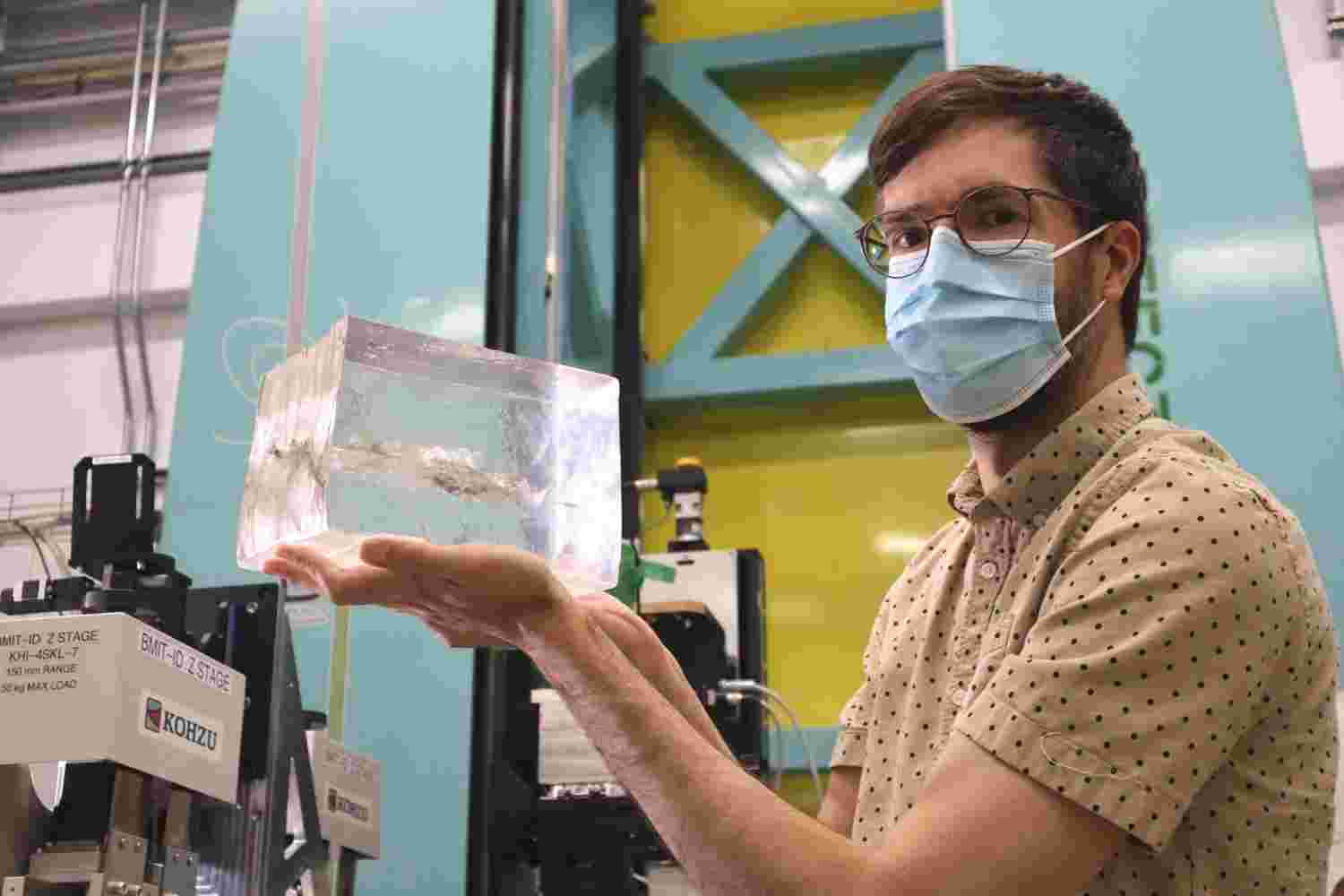New research on the risks of lead exposure from bullets used in big game hunting
For the first time, researchers have used synchrotron imaging to study both the size and spread of bullet fragments in big game shot by hunters.
By Greg BaskyElk in forest
The lead in some bullets used for hunting deer, moose, and elk is toxic to the humans who eat the harvested meat and to scavenger animals that feast on remains left in the field.
A team of researchers from the Canadian Light Source at the University of Saskatchewan (USask) and the College of Medicine at USask has for the first time used synchrotron imaging to study both the size and spread of bullet fragments in big game shot by hunters. Their findings were published today at 2pm E.T. in PLOS One.
Like a scene right out of the hit television series CSI, the research team fired bullets into blocks of ballistic gelatin – the same material used by law enforcement agencies for ballistic testing – and examined the resulting fragments using synchrotron imaging.
The BMIT beamline at the CLS enabled them to distinguish lead fragments from other materials used in bullets and bone fragments. To better simulate hunting, the team encased deer bone within the ballistic gelatin (which is a similar density to flesh).

Dr. Adam Leontowich, CLS Associate Scientist and lead author on the study, said the team found the lead fragments were significantly smaller than regular medical X-ray imaging has previously shown, and considerably more widely dispersed.
“I wasn’t surprised that bullets can produce hundreds of lead fragments,” said Leontowich, who is a hunter himself. “But I was surprised to see that the fragments can go down to the size of a single human blood cell.”
To date, researchers studying this issue have relied on medical radiography, which cannot distinguish lead from other materials used in ammunition or accurately measure fragments that small.
The researchers hope their findings will convince big game hunters to switch to bullets made of non-toxic materials such as copper and to save the lead bullets for target practice.
Some countries like Sweden and Denmark, as well as the state of California, have banned lead rifle ammunition for hunting. In Canada, Nova Scotia and Prince Edward Island included warnings about the health and environmental risks of lead bullets in their 2021-22 hunting regulation handbooks.
“There are other forms of rifle ammunition on the market made of non-toxic materials like copper that work just as well,” said Leontowich. “You don’t have to buy a new rifle to use them. And you can enjoy that moose steak or elk burger and not have to worry about ingesting lead fragments or about the fragments spreading into the environment.”
Leontowich AFG, Panahifar A, Ostrowski R (2022) Fragmentation of hunting bullets observed with synchrotron radiation: Lighting up the source of a lesser-known lead exposure pathway. PLoS ONE 17(8): e0271987. https://doi.org/10.1371/journal.pone.0271987
The Canadian Light Source (CLS) is a national research facility of the University of Saskatchewan and one of the largest science projects in Canada’s history. More than 1,000 academic, government and industry scientists from around the world use the CLS every year in innovative health, agriculture, environment, and advanced materials research.
The Canada Foundation for Innovation, Natural Sciences and Engineering Research Council, Canadian Institutes of Health Research, the Government of Saskatchewan, and the University of Saskatchewan fund CLS operations.
Photos: Synchrotron | BMIT beamline used for this project | Adam Leontowich
Media Relations:
Victoria Schramm
Communications Coordinator
Canadian Light Source
306-657-3516
victoria.schramm@lightsource.ca
